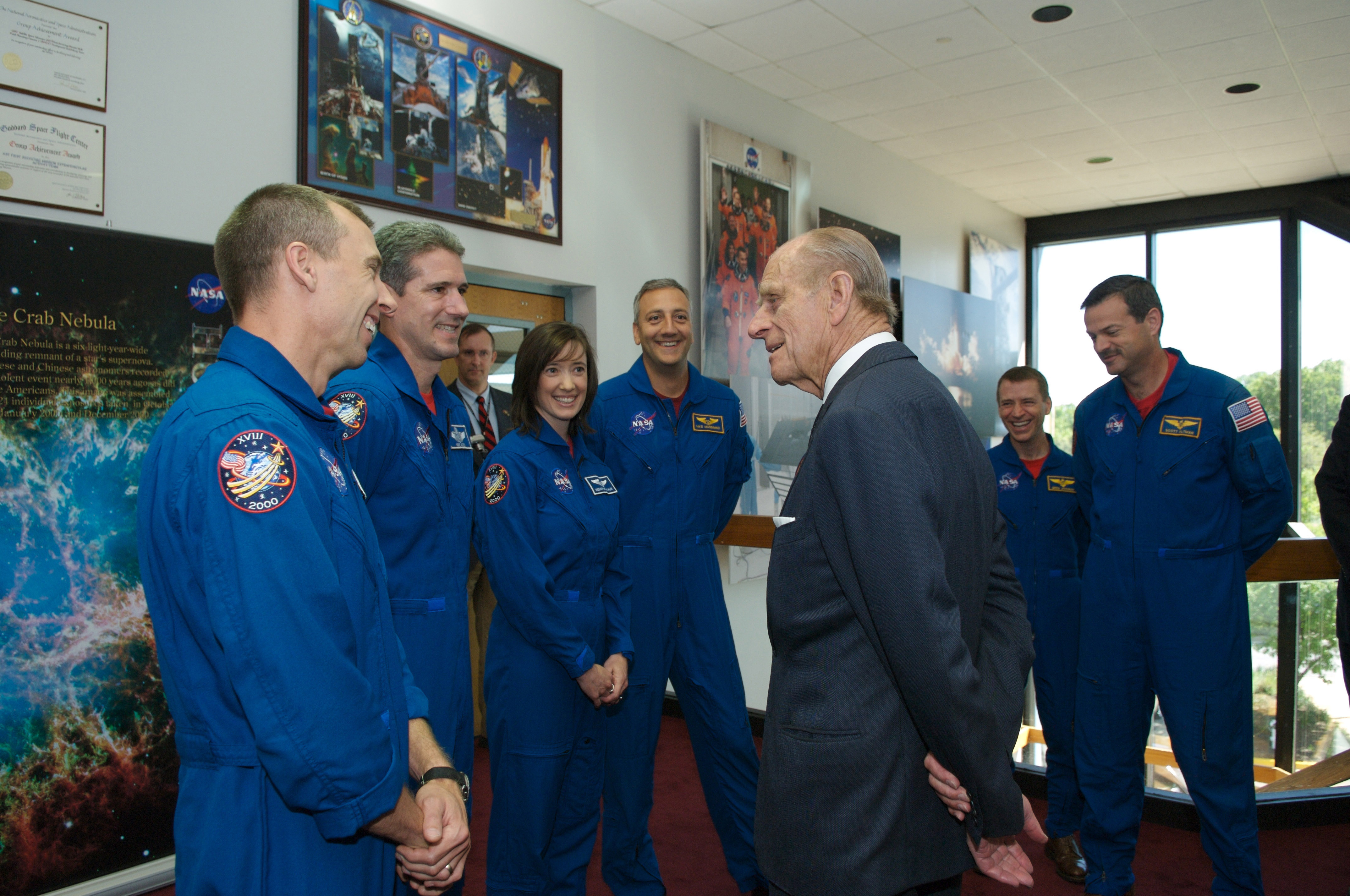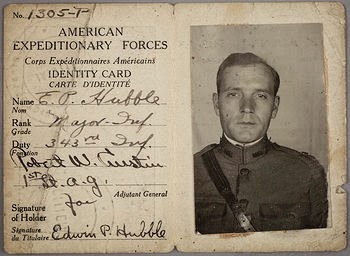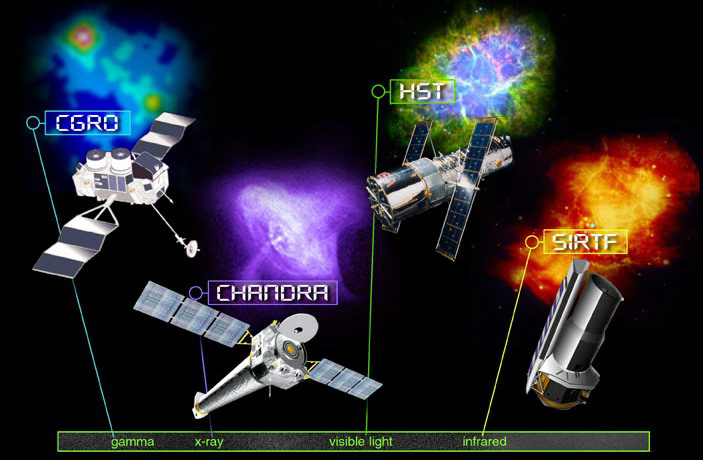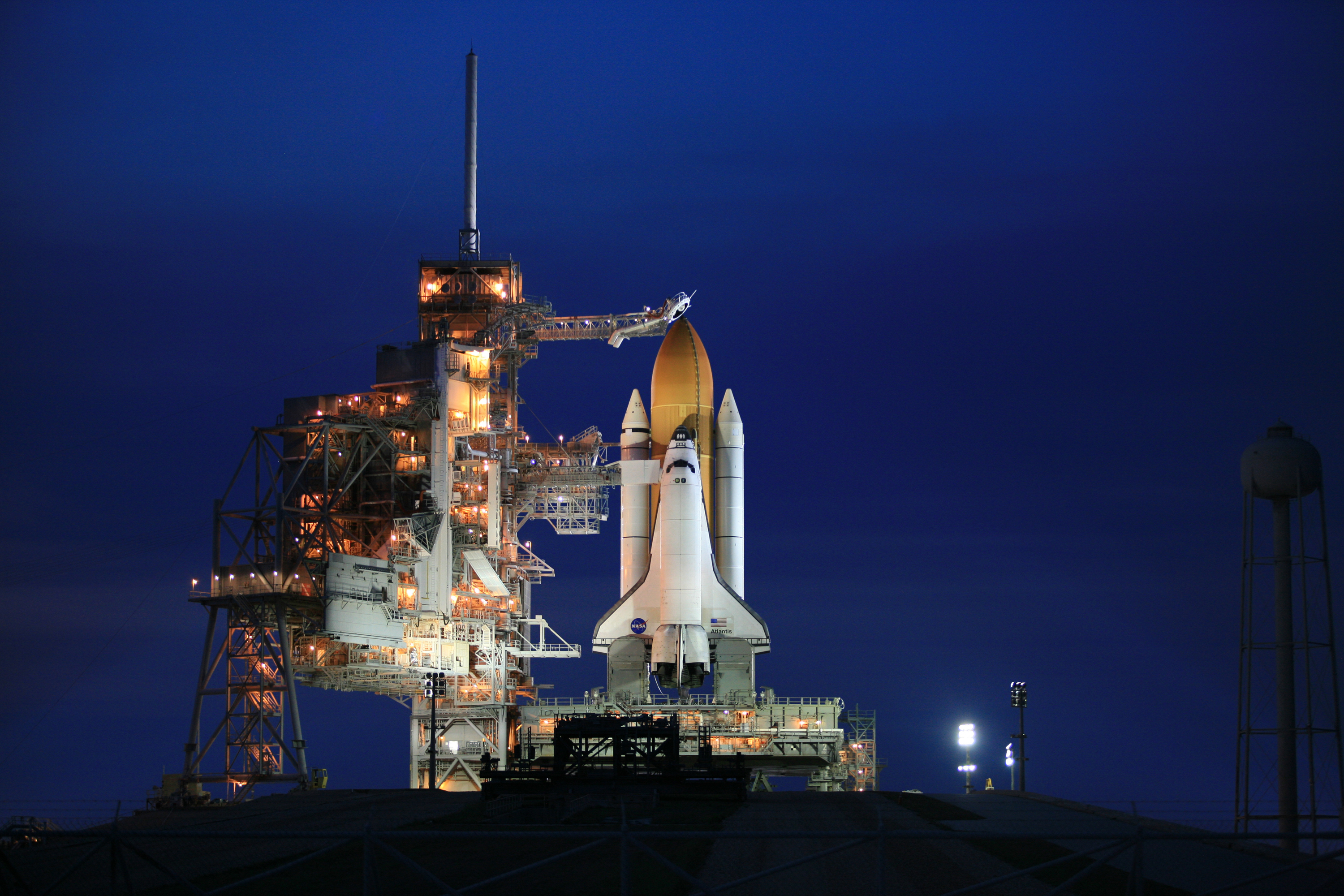|
Hubble
The Hubble Space Telescope (often referred to as HST or Hubble) is a space telescope that was launched into low Earth orbit in 1990 and remains in operation. It was not the first space telescope, but it is one of the largest and most versatile, renowned both as a vital research tool and as a public relations boon for astronomy. The Hubble telescope is named after astronomer Edwin Hubble and is one of NASA's Great Observatories. The Space Telescope Science Institute (STScI) selects Hubble's targets and processes the resulting data, while the Goddard Space Flight Center (GSFC) controls the spacecraft. Hubble features a mirror, and its five main instruments observe in the ultraviolet, visible, and near-infrared regions of the electromagnetic spectrum. Hubble's orbit outside the distortion of Earth's atmosphere allows it to capture extremely high-resolution images with substantially lower background light than ground-based telescopes. It has recorded some of the most detailed ... [...More Info...] [...Related Items...] OR: [Wikipedia] [Google] [Baidu] |
STS-125
STS-125, or HST-SM4 (Hubble Space Telescope Servicing Mission 4), was the fifth and final Space Shuttle mission to the Hubble Space Telescope (HST) and the last solo flight of the Space Shuttle Atlantis, Space Shuttle ''Atlantis''. The launch of the Space Shuttle ''Atlantis'' occurred on 11 May 2009 at 2:01 pm EDT. Landing occurred on 24 May at 11:39 am EDT, with the mission lasting a total of just under 13 days. carried two new instruments to the Hubble Space Telescope, the Cosmic Origins Spectrograph and the Wide Field Camera 3. The mission also replaced a Fine Guidance Sensor (HST), Fine Guidance Sensor, six gyroscopes, and two battery (electricity), battery unit modules to allow the telescope to continue to function at least through 2014. The crew also installed new thermal blanket insulating panels to provide improved thermal protection, and a soft-capture mechanism that would aid in the safe de-orbiting of the telescope by a robotic spacecraft at the end of its op ... [...More Info...] [...Related Items...] OR: [Wikipedia] [Google] [Baidu] |
Edwin Hubble
Edwin Powell Hubble (November 20, 1889 – September 28, 1953) was an Americans, American astronomer. He played a crucial role in establishing the fields of extragalactic astronomy and observational cosmology. Hubble proved that many objects previously thought to be clouds of dust and gas and classified as "nebulae" were actually Galaxy, galaxies beyond the Milky Way. He used the strong direct period-luminosity relation, relationship between a classical Cepheid variable's luminosity and periodic function, pulsation period (discovered in 1908 by Henrietta Swan Leavitt) for scaling cosmic distance ladder, galactic and extragalactic distances. Hubble provided evidence that the recessional velocity of a galaxy increases with its distance from the Earth, a property now known as "Hubble's law", although it had been proposed two years earlier by Georges Lemaître. The Hubble law implies that the universe is expanding. A decade before, the American astronomer Vesto Slipher had provid ... [...More Info...] [...Related Items...] OR: [Wikipedia] [Google] [Baidu] |
Great Observatories Program
NASA's series of Great Observatories satellites are four large, powerful space-based astronomical telescopes launched between 1990 and 2003. They were built with different technology to examine specific wavelength/energy regions of the electromagnetic spectrum: gamma rays, X-rays, visible and ultraviolet light, and infrared light. * The Hubble Space Telescope (HST) primarily observes visible light and near-ultraviolet. It was launched in 1990 aboard the Space Shuttle ''Discovery'' during STS-31. In 1997 the STS-82 servicing mission added capability in the near-infrared range, and in 2009 the STS-125 mission fixed the telescope and extended its projected service life. * The Compton Gamma Ray Observatory (CGRO) primarily observed gamma rays, though it extended into hard x-rays as well. It was launched in 1991 aboard ''Atlantis'' during STS-37 and was de-orbited in 2000 after a gyroscope failed. * The Chandra X-ray Observatory (CXO) primarily observes soft X-rays. It was launc ... [...More Info...] [...Related Items...] OR: [Wikipedia] [Google] [Baidu] |
Space Telescope Science Institute
The Space Telescope Science Institute (STScI) is the science operations center for the Hubble Space Telescope (HST), science operations and mission operations center for the James Webb Space Telescope (JWST), and science operations center for the Nancy Grace Roman Space Telescope. STScI was established in 1981 as a community-based science center that is operated for NASA by the Association of Universities for Research in Astronomy (AURA). STScI's offices are located on the Johns Hopkins University Homewood Campus and in the Rotunda building in Baltimore, Maryland. In addition to performing continuing science operations of HST and preparing for scientific exploration with JWST and Roman, STScI manages and operates the Mikulski Archive for Space Telescopes (MAST), which holds data from numerous active and legacy missions, including HST, JWST, Kepler, TESS, Gaia, and Pan-STARRS. Most of the funding for STScI activities comes from contracts with NASA's Goddard Space Flight Center b ... [...More Info...] [...Related Items...] OR: [Wikipedia] [Google] [Baidu] |
Near Infrared Camera And Multi-Object Spectrometer
The Near Infrared Camera and Multi-Object Spectrometer (NICMOS) is a scientific instrument for infrared astronomy, installed on the Hubble Space Telescope (HST), operating from 1997 to 1999, and from 2002 to 2008. Images produced by NICMOS contain data from the near-infrared part of the light spectrum. NICMOS was conceived and designed by the NICMOS Instrument Definition Team centered at Steward Observatory, University of Arizona, USA. NICMOS is an imager and spectrometer built by Ball Aerospace & Technologies Corp. that allows the HST to observe infrared light, with wavelengths between 0.8 and 2.4 micrometers, providing imaging and slitless spectrophotometric capabilities. NICMOS contains three near-infrared detectors in three optical channels providing high (~ 0.1 arcsecond) resolution, coronagraphic and polarimetric imaging, and slitless spectroscopy in 11-, 19-, and 52-arcsecond square fields of view. Each optical channel contains a 256×256 pixel photodiode array of mercury ... [...More Info...] [...Related Items...] OR: [Wikipedia] [Google] [Baidu] |
Advanced Camera For Surveys
The Advanced Camera for Surveys (ACS) is a third-generation axial instrument aboard the Hubble Space Telescope (HST). The initial design and scientific capabilities of ACS were defined by a team based at Johns Hopkins University. ACS was assembled and tested extensively at Ball Aerospace & Technologies Corp. and the Goddard Space Flight Center and underwent a final flight-ready verification at the Kennedy Space Center before integration in the cargo bay of the Columbia orbiter. It was launched on March 1, 2002, as part of Servicing Mission 3B (STS-109) and installed in HST on March 7, replacing the Faint Object Camera (FOC), the last original instrument. ACS cost US$86 million at that time. ACS is a highly versatile instrument that became the primary imaging instrument aboard HST. It offered several important advantages over other HST instruments: three independent, high-resolution channels covering the ultraviolet to the near-infrared regions of the spectrum, a large detector ar ... [...More Info...] [...Related Items...] OR: [Wikipedia] [Google] [Baidu] |
Wide Field Camera 3
The Wide Field Camera 3 (WFC3) is the Hubble Space Telescope's last and most technologically advanced instrument to take images in the visible spectrum. It was installed as a replacement for the Wide Field and Planetary Camera 2 during the first spacewalk of Space Shuttle mission STS-125 (Hubble Space Telescope Servicing Mission 4) on May 14, 2009. WFC3 was still operating. Specifications The instrument is designed to be a versatile camera capable of imaging astronomical targets over a very wide wavelength range and with a large field of view. It is a fourth-generation instrument for Hubble. The instrument has two independent light paths: a UV and optical channel that uses a pair of charge-coupled devices (CCD) to record images from 200 to 1000 nm; and a near infrared detector array that covers the wavelength range from 800 to 1700 nm. The UV/optical channel has two CCDs, each 2048×4096 pixels, while the IR detector is 1024×1024. The focal planes of both channe ... [...More Info...] [...Related Items...] OR: [Wikipedia] [Google] [Baidu] |
STS-31
STS-31 was the 35th mission of the NASA Space Shuttle program. The primary purpose of this mission was the deployment of the Hubble Space Telescope (HST) into low Earth orbit. The mission used the Space Shuttle ''Discovery'' (the tenth mission for this orbiter), which lifted off from Launch Complex 39B on April 24, 1990, from Kennedy Space Center, Florida. Following the Challenger accident clarification was required on mission numbering. As STS-51-L was also designated STS-33, future flights with the previous STS-26 through STS-33 designators would require the R in their documentation to avoid conflicts in tracking data from one mission to another. ''Discovery''s crew deployed the Hubble Space Telescope on April 25, 1990, and then spent the rest of the mission tending to various scientific experiments in the Shuttle's payload bay as well as operating a set of IMAX cameras to record the mission. ''Discovery''s launch marked the first time since January 1986 that two Space Shu ... [...More Info...] [...Related Items...] OR: [Wikipedia] [Google] [Baidu] |
Space Telescope
A space telescope or space observatory is a telescope in outer space used to observe astronomical objects. Suggested by Lyman Spitzer in 1946, the first operational telescopes were the American Orbiting Astronomical Observatory, OAO-2 launched in 1968, and the Soviet Orion 1 ultraviolet telescope aboard space station Salyut 1 in 1971. Space telescopes avoid the filtering and distortion ( scintillation) of electromagnetic radiation which they observe, and avoid light pollution which ground-based observatories encounter. They are divided into two types: Satellites which map the entire sky (astronomical survey), and satellites which focus on selected astronomical objects or parts of the sky and beyond. Space telescopes are distinct from Earth imaging satellites, which point toward Earth for satellite imaging, applied for weather analysis, espionage, and other types of information gathering. History Wilhelm Beer and Johann Heinrich Mädler in 1837 discussed the advantages of ... [...More Info...] [...Related Items...] OR: [Wikipedia] [Google] [Baidu] |
Space Telescope Imaging Spectrograph
The Space Telescope Imaging Spectrograph (STIS) is a spectrograph, also with a camera mode, installed on the Hubble Space Telescope. Aerospace engineer Bruce Woodgate of the Goddard Space Flight Center was the principal investigator and creator of the STIS. It operated continuously from 1997 until a power supply failure in August 2004. After repairs, it began operating again in 2009. The spectrograph has made many important observations, including the first spectrum of the atmosphere of an extrasolar planet, HD 209458b. The STIS was installed on Hubble in 1997 during its second servicing mission (STS-82) by Mark Lee and Steven Smith, replacing the High Resolution Spectrograph and the Faint Object Spectrograph. It was designed to operate for five years. On August 3, 2004, an electronic failure rendered STIS inoperable, ending its use 2 years beyond its predicted lifespan. In order to bring it back to operational status, the instrument was repaired by space shuttle astrona ... [...More Info...] [...Related Items...] OR: [Wikipedia] [Google] [Baidu] |
Cosmic Origins Spectrograph
The Cosmic Origins Spectrograph (COS) is a science instrument that was installed on the Hubble Space Telescope during Servicing Mission 4 (STS-125) in May 2009. It is designed for ultraviolet (90–320 nm) spectroscopy of faint point sources with a resolving power of ≈1,550–24,000. Science goals include the study of the origins of large scale structure in the universe, the formation and evolution of galaxies, and the origin of stellar and planetary systems and the cold interstellar medium. COS was developed and built by the Center for Astrophysics and Space Astronomy (CASA-ARL) at the University of Colorado at Boulder and the Ball Aerospace and Technologies Corporation in Boulder, Colorado. COS is installed into the axial instrument bay previously occupied by the Corrective Optics Space Telescope Axial Replacement (COSTAR) instrument, and is intended to complement the Space Telescope Imaging Spectrograph (STIS) that was repaired during the same mission. While STIS operate ... [...More Info...] [...Related Items...] OR: [Wikipedia] [Google] [Baidu] |
Goddard Space Flight Center
The Goddard Space Flight Center (GSFC) is a major NASA space research laboratory located approximately northeast of Washington, D.C. in Greenbelt, Maryland, United States. Established on May 1, 1959 as NASA's first space flight center, GSFC employs approximately 10,000 civil servants and contractors. It is one of ten major NASA field centers, named in recognition of American rocket propulsion pioneer Robert H. Goddard. GSFC is partially within the former Goddard census-designated place; it has a Greenbelt mailing address.CENSUS 2000 BLOCK MAP: GODDARD CDP " . Retrieved on September 1, 2018. 1990 Census map of Prince ... [...More Info...] [...Related Items...] OR: [Wikipedia] [Google] [Baidu] |








